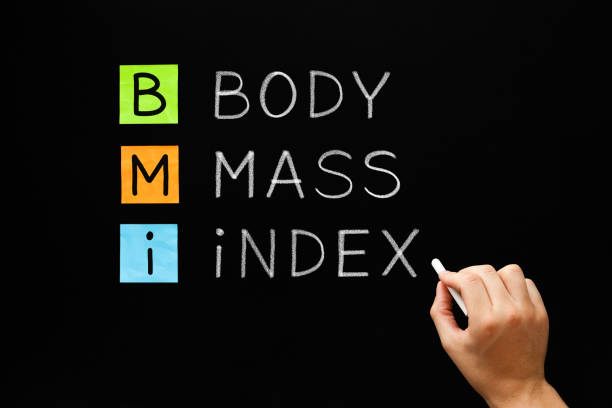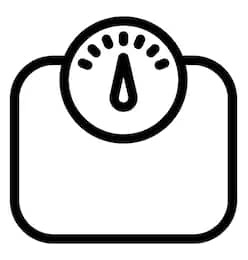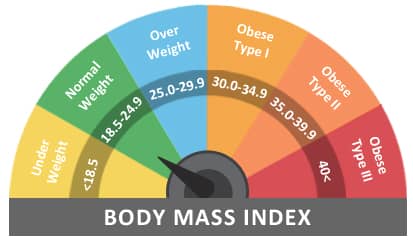
Body Mass Index (BMI) is a measure of body fat based on weight with respect to height. It is a useful and inexpensive estimate. But, it is not a direct measure, as it does not distinguish between fat, fluid, muscle, or bone mass. For instance, muscular athletes may have a high BMI, but most of their weight is muscle, not fat. Since extra muscle can result in a high BMI, body circumference measurements can offer additional insight as to whether a high BMI is due to healthy muscle tissue or unhealthy excess fat.
To calculate your BMI, you will need your current height and weight measurements.
Weight Measurement

Use the same scale to weigh yourself every time. Different scales give different readings. Invest in a quality scale within your budget so you can weigh yourself at home.
Place your scale on a flat, firm surface. Avoid uneven surfaces, or carpet.
When you step onto the scale, stand still, preferably barefooted, with your weight distributed evenly on both feet. Don’t hold on to anything.
Weigh yourself in the morning, after using the bathroom, before eating, and wearing as little clothing as possible (or none at all).
Weighing yourself daily is best for fat loss. This makes you more aware of how what you eat affects your weight. This way, you can quickly address any weight changes and adjust your diet and exercise accordingly.
Daily fluctuations can also occur due to menstruation, as well as changes in water, salt, and alcohol intake. Record at least 3 weigh-ins per week and calculate the average (total number of weights recorded ÷ number of days). Comparing weekly averages will eliminate daily fluctuations. Track your weight in a journal or on graph paper.
Height Measurement

To measure your height, you will need a tape measure, head piece and a pencil. Measure yourself in the morning, as your spine compresses during the day, making you shorter.
Stand barefooted on an uncarpeted floor, with your head, shoulders, buttocks and heels against a flat wall. Where possible, this should be in a corner or close to a door, so you can use the straight line of the door or corner to guide your tape.
While looking straight ahead, place a flat head piece (like a hardcover book) on the top of your head, and press it against the wall. Make sure it is horizontal to the floor and perpendicular to the wall, forming a right angle. Hold the book in position and slide out from under it. Mark the wall with a pencil at the point where the book meets your head.
Measure from the base of the floor to the pencil mark with a tape measure.
If the tape is too short to measure your full height, measure as high as you can and make a pencil mark on the wall. Then, measure from the new mark to the mark you made with the book. Add the individual measurements to get your height.
Record your height to the nearest 1/8th inch or 0.1 centimeter.
BMI Calculation

To calculate your BMI, multiply your height in meters by itself. For example, if your height is 1.5m, 1.5 multiplied by 1.5 equals 2.25m².
Next, divide your weight in kilograms by your height in meters squared. For example, if you weigh 60kg, 60 divided by 2.25 equals a BMI of 26.7kg/m².
BMI = Weight (kg) ÷ Height²(m)
= 60kg ÷ (1.5 x 1.5) m²
= 60kg ÷ 2.25m²
= 26.7kg/m²
| BMI | WEIGHT STATUS |
| <16 | Severely Underweight |
| 16.1 – 18.4 | Underweight |
| 18.5 – 24.9 | Normal/Healthy Weight |
| 25.0 – 29.9 | Overweight |
| 30.0 – 34.9 | Class I Obesity |
| 35.0 – 39.9 | Class II Obesity |
| >40 | Class III/ Morbid Obesity |
A high BMI (above 25) can be a sign of too much body fat. This increases risk of obesity related diseases. Conversely, a low BMI (below 18.5) is a sign of insufficient body fat. This can lead to:
- Bone loss
- Heart problems
- Iron deficiency anemia
- Decreased immune function
Thanks for reading
Don’t forget to subscribe to get the latest updates. If you have any questions or suggestions, leave a comment below or contact me here.




